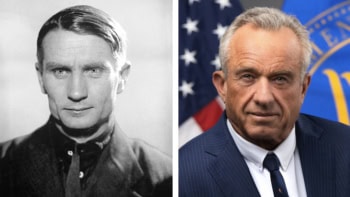Cryogenics specialist ICEoxford has reinforced its international reputation for product innovation with a 2020 Queen’s Award for Enterprise

It’s been a busy 12 months at ICEoxford, the UK-based designer and manufacturer of specialist cryogenic systems for scientific research and industry. While continuing to develop ultralow-temperature solutions for its established customers – among them neutron and X-ray beamline scientists and advanced materials R&D laboratories – ICEoxford has been delivering new product innovations and significant new revenues in the burgeoning field of quantum computing.
Beyond the financial upside, ICEoxford’s diversification strategy also yielded high-profile national and international recognition last month when the company was among this year’s winners of a Queen’s Award for Enterprise (Innovation). The award specifically acknowledges development and commercialization of the DRY ICE 1.0K, a high-cooling-power cryostat that can reach temperatures as low as 0.8 K to support optical quantum-computing applications.
Here Chris Busby, ICEoxford managing director and co-founder, talks to Physics World about the secrets of success at ultralow temperatures.
Specialist cryogenics is a competitive marketplace. What’s the ICEoxford value proposition?
ICEoxford’s core competency is design and development of leading-edge cryogenic products, though what really sets us apart is the relentless focus on customer service and collaborative innovation. Put another way: our product design team works directly with scientists to understand their requirements at a granular level, giving them confidence that we can deliver the optimum system versus their budget and technical specifications.
We’re very good at what we do, but high-end cryogenics is not a straightforward business. Problems are inevitable in ultralow-temperature systems, so the way you handle post-sale issues arising really matters. As ICEoxford managing director, I take it personally – and will get involved directly – if a customer is unable to conduct their research using one of our machines. That mindset informs the customer-first approach across our engineering and commercial teams. We are not, and never will be, a business that takes the money and walks away.
How will the Queen’s Award benefit ICEoxford in terms of growth and business development?
The Queen’s Award caps a fantastic year for the ICEoxford team and gives us confidence that we can compete on a level playing field with the bigger vendors in the specialist cryogenics market. For me, as one of the co-founders, it really feels like ICEoxford has found its identity and come of age over the past 18 months. At the top line, we set ourselves a target of £3m in orders in the last financial year (ending March 2020). We actually exceeded £5m, while growing margins, profitability and increasing our sales into industry to around 40% of new business. On the personnel side, we’ve scaled up to 30 employees and now have critical mass across all customer-facing functions – product design, engineering, sales and marketing, and technical support.

The innovations underpinning the DRY ICE 1.0K cryostat are formally recognized in the Queen’s Award. What are the unique features of this product?
The DRY ICE 1.0K was developed in response to a request from scientists at Massachusetts Institute of Technology (MIT) in the US. In short, the MIT team needed to optimize the performance of single-photon detectors in its quantum computing set-up while also managing a large experimental heating load. Our solution is the DRY ICE 1.0K cryostat, which can reach temperatures as low as 0.8 K while delivering cooling powers in excess of 250 mW in the sample area – five times greater than competing commercial products. On the back of the MIT project, we subsequently sold five Dry ICE 1.0K systems into a single US industry customer in 2019. We’re bound by a non-disclosure agreement, but all told that was a $2 million contract to kit out their R&D lab for work on next-generation quantum technologies.
Have other customers subsequently shown interest in the DRY ICE 1.0K?
Absolutely. We’ve already customized the cryostat for a Silicon Valley quantum computing start-up venture – though again we’re unable to name them at this point. As well as high cooling power, this customer requested an integrated probing station to carry out real-time electronic and optical characterization of their photonic ICs within the cryostat’s cold-head. Elsewhere, we’re working up a design study with Shanghai University scientists for a possible electron-beam application of the DRY ICE 1.0K. The latter represents a significant engineering challenge that will push the cryostat performance along several coordinates – low temperature, high cooling power and automation.
ICEoxford is clearly in growth mode. How do you manage specialist recruitment into the product development and engineering functions?
We recruit largely with the team in mind, rather than focusing on individuals. In other words, how will this candidate and his/her expertise support our wider cross-disciplinary requirements in product development and engineering. Generally, that means bringing in new graduates – physicists, mechanical engineers, recently a couple of biotechnologists – and training them in-house to become cryogenic specialists.
For context, Oxfordshire is home to lots of technology companies and big science facilities – including the Rutherford Appleton Laboratory and Culham Centre for Fusion Energy – which means there’s intense regional competition for science and engineering talent. As a small company, that means we have to work doubly hard to attract and retain the best people, with structured training and development among our big selling points for prospective employees.
How has ICEoxford been affected by the Coronavirus pandemic?
We’re a specialized technology business that, in normal times, relies on sales staff meeting face-to-face with scientists to initiate the requirements-gathering process, whether that’s in their laboratories or at scientific conferences and exhibitions. Like everyone else, though, we’re making the best of the workarounds. Our engineering team is currently doing lots of Zoom calls to design and iterate cryogenic systems on-screen with our customers. We’re trying to be as flexible as possible while maintaining rapid turnaround of designs and 3D drawings to customers.
What’s next for ICEoxford?
Despite the uncertainty with the global health crisis, we have started our new financial year with a full order book. The timing of the Queen’s Award is another huge boost, providing international recognition as well as renewed confidence in our competitive positioning versus other cryogenics vendors. Growth and investment are very much on the agenda and we are evaluating further development and diversification of our DRY dilution refrigerator range up to the 1.0 K regime. The task, as always, will be to combine sustainable growth with personalized customer support.




